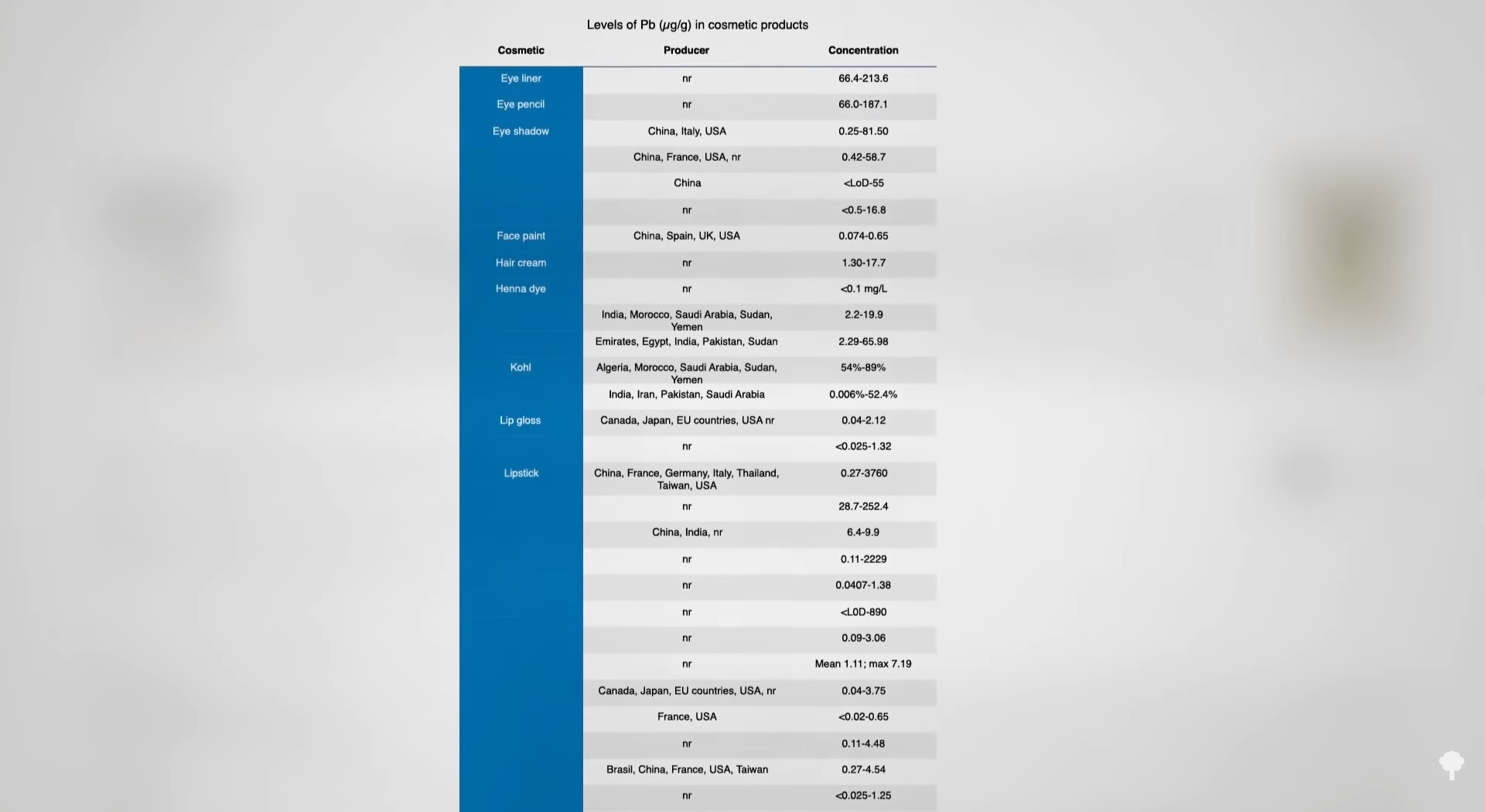
Dozens of lipsticks and lip glosses are put to the test.
“Over the past years, using cosmetic products has increased worldwide at an alarming rate due to unending pursuit for individual beautification…” There’s nothing necessarily wrong with that unless cosmetic products contain ingredients that may be linked to disease—ingredients such as toxic heavy metals like lead.
As you can see at 0:28 in my video Flashback Friday: Is Lipstick Safe Given the Lead Contamination?, lead has been found in a wide range of cosmetic products, from eye shadow to skin cream, and foundation to blush. You may recall that I talked about lead in henna in my video Is Henna Safe?, but in looking at the data, “important warnings can be recognized”: the presence of lead in lipsticks. This is concerning because lipstick wearers may actually swallow a little bit of it. In fact, it has “been estimated that a woman inadvertently ingests 1.8 kg [about 4 lbs] of lipstick during her lifetime.” “Moreover, lipsticks can be used by pregnant women or women of child bearing age.” (I mean, obviously.) Yes, lead is highly toxic, but how much lead can there be in lipstick? Surely, it is “a very minor source….Nonetheless, one should not exclude the fact that lead accumulates in the body due to over time and repetitive lead-containing lipstick or hair dye application, which lead to significant exposure levels.” You don’t really know, though, until you put it to the test.

Thirty-two lipsticks and lip glosses were tested, and lead was detected in 75 percent of the products, which “suggests potential public health concerns.” But how much lead did the researchers actually find? About half of the samples exceeded the FDA-recommended maximum level set for candy.
That limit is set for something kids may eat every day, though. Kids are not going to eat tubes of lipstick each day. “Nevertheless, it is generally accepted that there is no safe level of Pb
intake,” and, ideally, we should get contaminant levels down to zero. As a consumer group pointed out, a quarter of the lipsticks were lead-free, so we know it can be done. Maybe we should better regulate toxic metals in cosmetics to protect women’s health in the United States, as has already been done in Europe. Fair enough, but it wasn’t well-received.
The billion-dollar lipstick industry wasn’t happy. In an article that tried to downplay the risks, the scientists-for-hire firm that once played villain in the real-life Erin Brockovich case concluded that, even though lipstick may contain lead, the concentrations are so low that they “are not expected to pose any health risks to adults or children.” Children’s blood lead levels are influenced more by background lead exposures, such as lead in the air, dust, water, and food, than by lipstick exposures, but just because our environment is so contaminated doesn’t mean we need to add to the problem. In fact, because there’s so much lead around anyway, maybe there’s that much more reason to cut down on additional exposures. But in that article, the scientists-for-hire calculated that an adult would need to apply lipstick more than 30 times a day to raise their blood lead level to even the most stringent limits and 695 times a day to get blood levels up to more concerning levels.
However, as you can see at 3:13 in my video, this was based on an assumption that lipstick would only have about one part per million lead or, at the extreme end, maybe two or three parts per million (ppm). But by 2016, about ten times more lipsticks were tested, and they averaged nearly 500 ppm—with 10 percent exceeding 1,000 ppm—going all the way up to 10,000 ppm, with more than one out of five exceeding FDA and even Chinese safety limits on lead in cosmetics.

As you can see in the graphs below and at 3:42 in my video, lip gloss was worse than lipstick; orange and pink colors had more lead than brown, red, or purple; and all of the really contaminated cosmetics were the cheaper ones, sold for less than five dollars each.

Hold on. The highest concentration found was 10,185 mg/kg. That’s 10 grams per kilogram, which means the lipstick was 1 percent pure lead. That means a single application could expose a grown woman to perhaps 12 times the tolerable daily intake.
And if a woman is interested in having children, that poses a “particular concern,” as lead accumulates in our bones and “may be released into the bloodstream during pregnancy,” where it can slip through the placenta or into breast milk.
The good news is that the FDA is considering lowering the maximum allowable lead levels in lipstick from 20 ppm to 10 ppm, something Canada arrived at a decade ago. But without enforcement, it doesn’t matter. As you can see in the graph below and at 4:39 in my video, moving the legal limit from 20 ppm down to 10 ppm would just mean that instead of 23 percent of lip products exceeding legal levels, 27 percent would be exceeding legal levels. Right now, the limit’s 20 ppm, but what does it matter if there still may be products on store shelves that violate the legal limits?

Is Henna Safe? is the video I mentioned.
I think the only other cosmetic safety videos I have are Flashback Friday: Which Intestines for Food and Cosmetics? and Avoiding Adult Exposure to Phthalates.